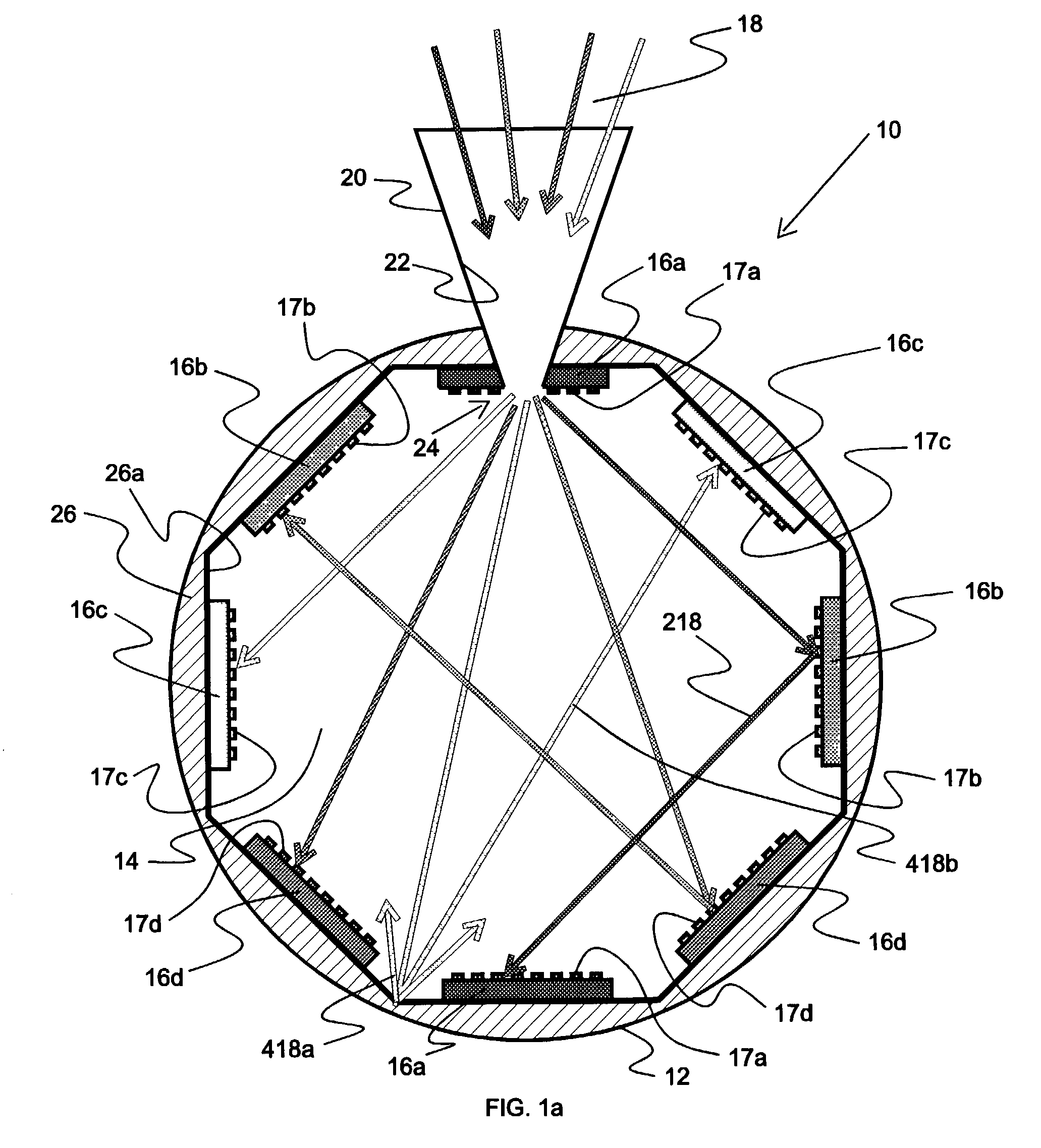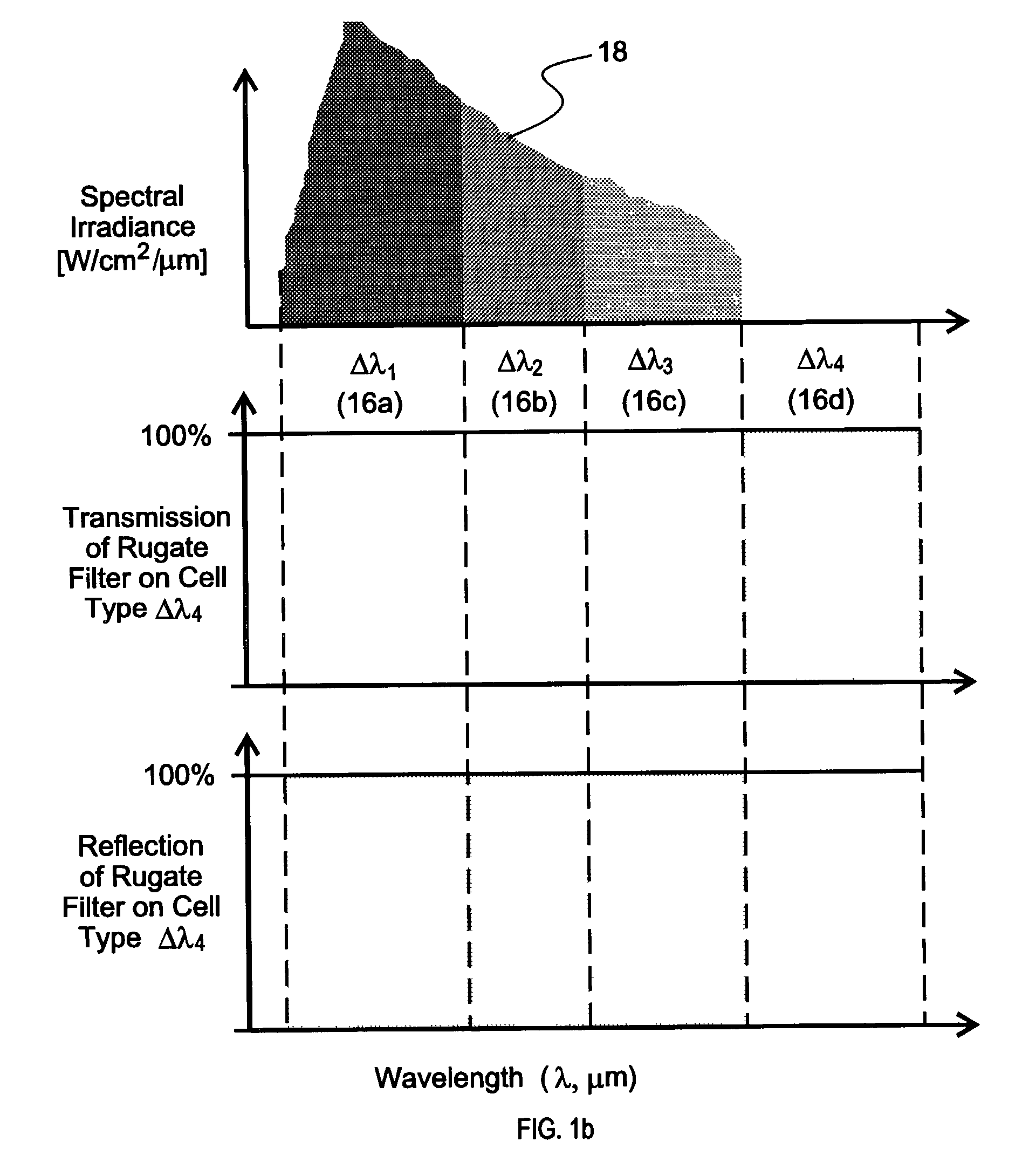Concentrating photovoltaic cavity converters for extreme solar-to-electric conversion efficiencies
a photovoltaic cavity and conversion efficiency technology, applied in thermal-pv hybrid energy generation, machines/engines, control devices, etc., can solve the problems of wasting the remainder of available energy outside of their limited spectral response, and wasting the excess energy of photons
- Summary
- Abstract
- Description
- Claims
- Application Information
AI Technical Summary
Benefits of technology
Problems solved by technology
Method used
Image
Examples
Embodiment Construction
[0034] Reference is now made in detail to a specific embodiment of the present invention, which illustrates the best mode presently contemplated by the inventor for practicing the invention. Alternative embodiments are also briefly described as applicable.
[0035] The invention herein is directed to the performance of a photovoltaic cavity converter (PVCC) module designed for a concentration in the range of 500 to over 1000 suns and a power output range of a few kilowatts to 50 KW.sub.e when combined with a primary dish and a secondary concentrator. A 1.5 KW prototype unit is presently being developed for use at the NREL High-Flux Solar Furnace (HFSF). The module herein is also expected to find use in, for example, DOE's Concentrating Solar Power (CSP) program to develop systems in the 1 to 5 kW.sub.e and 10 to 30 kW.sub.e size ranges based on reflective optics. A typical power range is about 30 to 50 kiloWatts. Connecting a plurality of such modules together in a power plant permits ...
PUM
 Login to View More
Login to View More Abstract
Description
Claims
Application Information
 Login to View More
Login to View More - R&D
- Intellectual Property
- Life Sciences
- Materials
- Tech Scout
- Unparalleled Data Quality
- Higher Quality Content
- 60% Fewer Hallucinations
Browse by: Latest US Patents, China's latest patents, Technical Efficacy Thesaurus, Application Domain, Technology Topic, Popular Technical Reports.
© 2025 PatSnap. All rights reserved.Legal|Privacy policy|Modern Slavery Act Transparency Statement|Sitemap|About US| Contact US: help@patsnap.com



